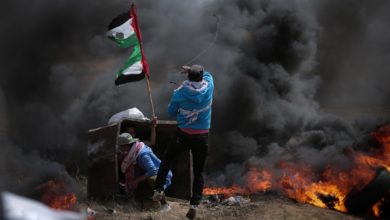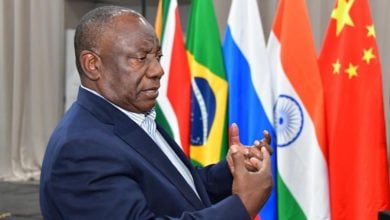South Africa has long been portrayed as a unique case of colonialism and racial oppression because it was governed for decades by the formal rules of “Apartheid.” But, for revolutionaries in South Africa and across the continent, the struggle, despite its unique characteristics, was a key component of the broader wave of African liberation.
Common enemies, common solutions
The transatlantic slave trade, the subsequent colonial rule by Western European powers and the formalized division of the continent in the 1885 Berlin Conference affected all of Africa.
The common enemies and problems facing the nations of Africa led in turn to common struggles and movements that largely embraced socialism and pan-Africanism as the way forward.
Beginning in the 1920s, communist and socialist parties were formed in all regions of Saharan and sub-Saharan Africa. In the 1940s, national liberation movements expanded against the old European colonial powers, and African socialists organized the main sectors of the populace to take action, from industrial to domestic workers, the unemployed, students, subsistence farmers and the landless.
The Organization of African Unity was founded in Addis Ababa, Ethiopia, on May 25, 1963, bringing together forces from across the continent. A key element of this first meeting was the establishment of a Liberation Committee aimed at providing assistance on all levels to those still struggling against colonial rule. Southern Africa was a major focus. While South Africa was not formally “colonized” by a foreign power, the Apartheid government dominated by the white settler population held its African population in a de facto colonial state.
South Africa as the tip of the spear
Because of its status as the most industrially developed country on the continent, South Africa was central to imperialist domination, and also a key link in the chain of continental revolution.
South Africa’s settler government used its economic and military power to destabilize attempts at greater African unity.
This took place in two principal ways. First, the South African government was able to weaken the socialist and progressive states in southern Africa via warfare. It assisted the racist regime in Rhodesia, sponsored reactionary forces in the region and employed full-scale military aggression in Angola, Mozambique and Namibia, which was a South African colony. Second, their economic power allowed reactionary African leaders like Côte d’Ivoire’s then-president Félix Houphouët-Boigny to posture as “negotiators” for “peaceful” resolution of the anti-Apartheid struggle.
South Africa justified this political and military destabilization work on the basis of “anti-communism,” because a majority of southern African liberation forces were socialist-oriented. This was also the great fear of the imperialists. They anticipated that the triumph over Apartheid South Africa would pave the way for socialism in the industrial and political center of the continent.
Unity needed for victory
The national liberation movements in southern Africa received strong support from African socialist states and pro-socialist governments, such as Ghana, Tanzania, Guinea, Zambia, the People’s Republic of Benin and the People’s Republic of Congo-Brazzaville, as well as countries like Libya and Nigeria.
Tanzania hosted ANC training camps as early as 1962, and in 1978 allotted spaces to create an educational facility for young people who had left the country in the wake of the Soweto uprising. Zambia served as the headquarters for each of these liberation struggles, providing safe havens for exiles and critical rear base areas for training and preparation for operations against the colonial enemy.
China, the Soviet Union, the Democratic People’s Republic of Korea, the Socialist Republic of Vietnam and other nations in the socialist camp also provided support to southern African liberation struggles.
This international coordination among African forces and the socialist camp bore fruit in days of mass protest, mass mobilizations of civil disobedience in the townships of South Africa in the 1980s and the decisive Cuban contribution to the battle of Cuito Cuanavale, Angola. This battle safeguarded the sovereignty of Angola and hastened the independence of Namibia, as well as the release of Nelson Mandela and other senior leaders of the national liberation movement.
China’s abandonment of a principled revolutionary and internationalist foreign policy, and the later overthrow of Soviet Union, were great blows for those fighting to free themselves from capitalist and imperialist domination on the African continent. This new global situation reversed the tide of revolution and damaged the trend towards pan-African unity.
More than ever, the examples of southern Africa, from the organized class struggle of South Africa to land reform in Zimbabwe, have the ability to shape struggles against neo-colonialism across Africa. As issues of land use, ethnic conflict, living standards and national sovereignty sweep across the continent, the interconnectedness of these struggles will unite Africa and lead to true liberation: Socialism.





